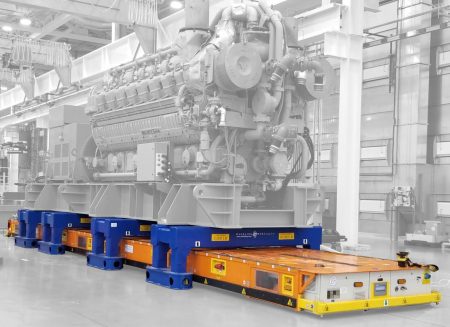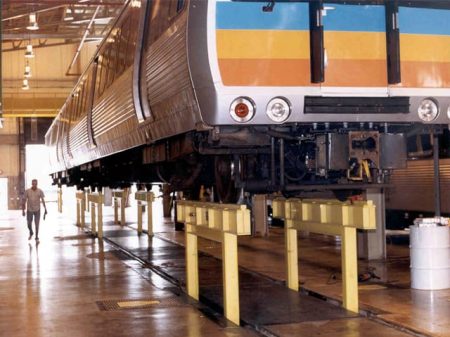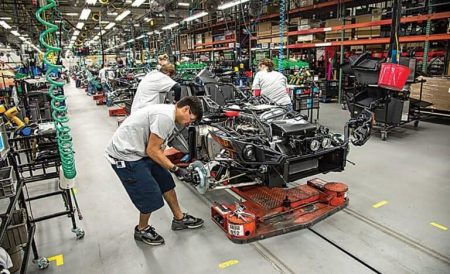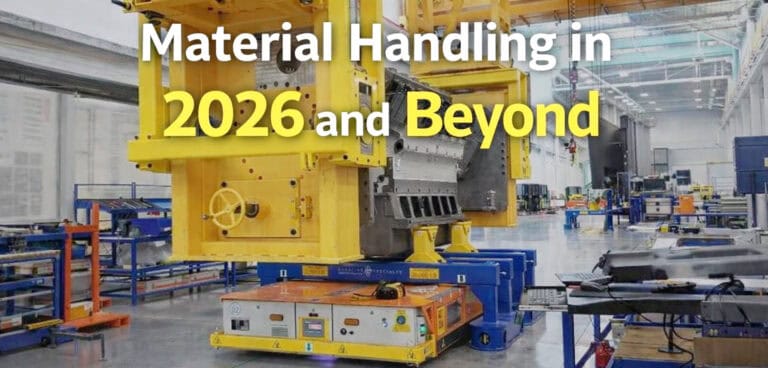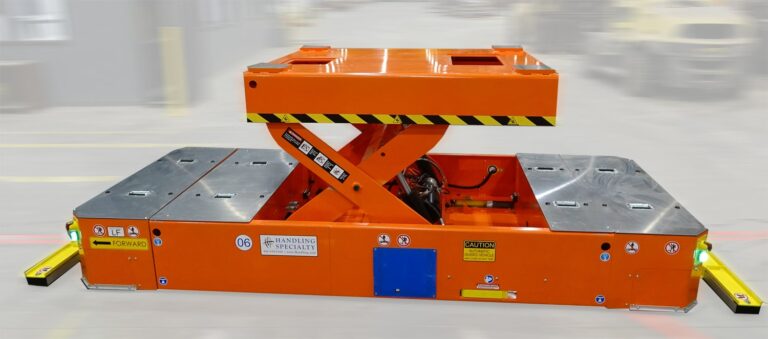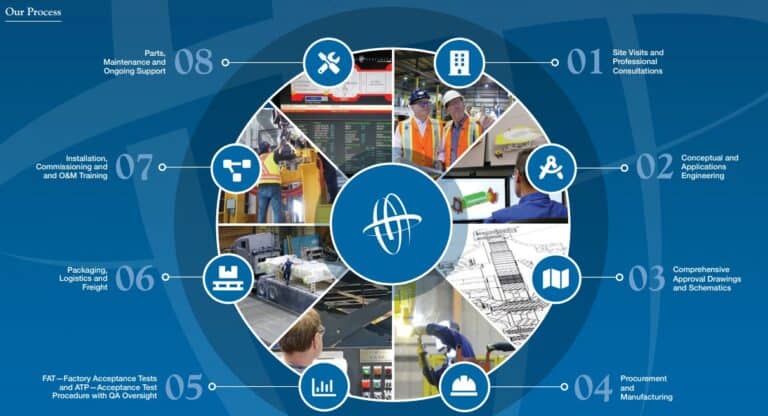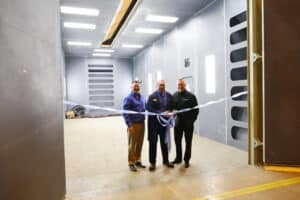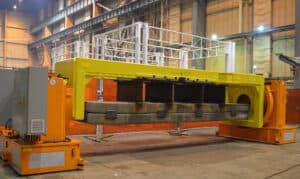It is widely believed by many people within the material handling industry that automatic guided vehicles (AGVs) were first developed by an American company called Barrett Electronics in the mid-1950s. These first AGVs were relatively simple, battery-powered, tow-type vehicles that followed tracks of wires embedded in a distribution warehouse floor. Since then, AGV capabilities, performance, and reliability have continued to evolve and have become widely adopted across various industries. With the advent of new technologies, it has become possible to automate many complex material handling processes by using AGVs.
Handling Specialty has considerable experience in the design, manufacture, installation, and ongoing technical support for large capacity and custom AGVs. Implementing custom-engineered AGVs requires careful planning and strong project execution capabilities. A few critical project considerations and best practices are as follows:
1. Goals and Objectives
It is very important that the overall goals and objectives of deploying an AGV solution be accurately defined. This effort should include an assessment of exactly what the company wants to achieve by implementing AGVs as well as how it will fit within the overall business’ operational strategies in the short and long term. Attention to future scalability such as the addition of more AGVs, expansion of control systems, changes to products being handled, and integration with other plant automation systems is important.
AGV with Specialized, Floating Tooling Fixture
2. Project Planning and Site Evaluation
Developing a comprehensive project plan that captures anticipated timelines, budgets, and resources required to implement the AGVs is beneficial. A thorough site assessment of the floor conditions, production equipment locations, traffic patterns, and potential obstructions is necessary to establish the most suitable layouts and routes for the AGVs. At this stage, the project team should identify and define the critical process requirements such as capacity, duty cycle, physical size, positioning capabilities, takt times, control interfaces, and overall application expectations.
3. AGV Selection
Implementation of AGVs can be a complex process without a clear definition of scope, expectations, and responsibilities. Selecting the appropriate type of equipment along with the best AGV supplier takes careful consideration and evaluation. Cost alone should not be the deciding factor in the evaluation but rather one measure in the overall assessment of value. It is critical that the correct equipment is chosen for the specific application. For instance, selecting an off-the-shelf pallet delivery type AGV for a robust, production-duty-type application would not be the most suitable approach. It would be more advantageous to reach out to established firms with experience with heavy-duty solutions suited for production operations. Consider factors such as load capacity, charging, safety, and navigation technologies as well as capabilities with design, execution, and long-term support when selecting an AGV partner.
Production Duty AGVs for Progressive Assembly Operations
4. Factory Acceptance Test
The AGV supplier should be able to demonstrate the AGV functionality by conducting a factory acceptance test (FAT) in a factory environment that simulates the specified operation, loads, speeds, safety, navigation, and communications of the equipment. The FAT provides the opportunity for the Customer to inspect and verify that the equipment is being provided in accordance with the contractual specifications and provides an opportunity for the Customer to address any questions related to operation, installation, maintenance, and logistics. A successful FAT provides confidence that the equipment supplied has been fully verified and can also help to minimize start-up abnormalities in the field as the equipment has been debugged and proven to be operational at the plant of manufacture prior to shipment.
5. Installation and Commissioning
Successful integration of the equipment at the Customer’s site requires that the AGV supplier have a dedicated team of field service advisors with comprehensive capabilities in mechanical, electrical, and controls disciplines. Site preparations such as clearing the traverse path, floor modifications, power supply drops, electrical/controls interconnections, etc. should be completed prior to the arrival of the AGVs. Installation involves the set up of the navigation markers, charging stations, control panels, communications, remote HMIs, and the AGVs themselves. Commissioning captures the final configuration of the navigation and communication systems, safety and operational verification, final software debugging, customer acceptance testing, and buy-off.
6. Training – Comprehensive training for operators, process engineers, and maintenance personnel
is essential to ensure proper operation and maintenance of AGVs. Operation and maintenance training can take various forms (i.e., in-person, online, and manuals) and it is important that the AGV supplier provide detailed operation, maintenance, and training documentation. Proper training supported by the AGV supplier can ensure that the AGVs operate safely and efficiently, reducing the risk of accidents while increasing productivity and reliability.
Large Capacity, Crabbing Automatic Guided Vehicle
7. Continuous Improvement
Establish and execute a robust maintenance and housekeeping plan to ensure that the AGVs remain in solid working condition and are meeting performance expectations. Continuously monitor the performance of the AGVs and implement methods to improve their performance and efficiency within the operations. Work with the AGV supplier to integrate the latest software/controls updates, have recommended spare parts in stock, and initiate ongoing inspections and preventative maintenance.
Handling Specialty has more than sixty years of experience in providing custom-engineered material handling solutions to companies in the automotive, rail/transportation, aerospace, power-gen, entertainment, steel/metals, and advanced manufacturing sectors. Handling Specialty provides safe, efficient, and heavy-duty solutions for production applications involving large capacities, high-duty cycles, unique configurations, robust environments, and stringent process, quality, and safety demands. Handling Specialty builds big things to help its customers build big things.
By Michael Roper, Sales Manager, Handling Specialty

